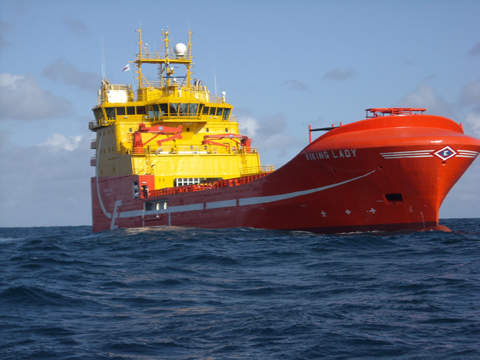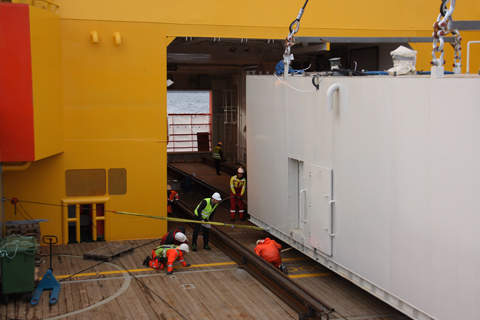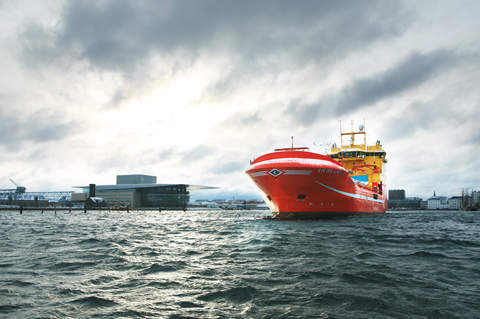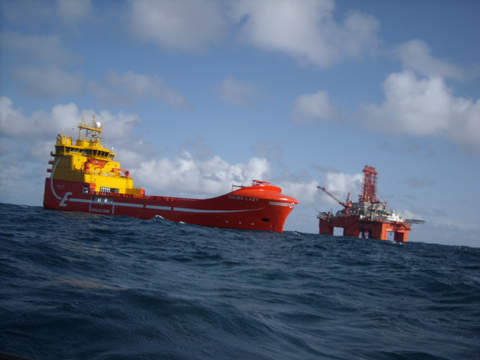The Viking Lady offshore supply vessel is the only commercial vessel to use fuel cell technology. It has been deployed in the North Sea.
It has been claimed that the Viking Lady is the most environmentally friendly vessel ever built. In December 2009, the vessel was docked in central Copenhagen to demonstrate the successful integration of fuel cell technology with traditional machinery.
The vessel was designed by Wartsila Ship Design and built on the western coast of Norway by West Contractors. It has been classified as DNV 1A1 Supply Vessel by Det Norske Veritas. Viking Lady was delivered its owner, Eidesvik Offshore, in April 2009. After its delivery, the vessel was chartered to French oil company Total.
FellowSHIP project
The technology used on Viking Lady is an outcome of the FellowSHIP project, a joint industry R&D project to develop fuel cell technology for vessel propulsion.
The project was initiated by Det Norske Veritas, Eidesvik and Wartsila in 2003. It is being developed in three phases and is funded by the Research Council of Norway, Innovation Norway and the Eureka network. It is also supported by the German Federal Ministry of Economics and Technology.
Viking Lady was the vessel chosen for the reserach. Phase one (2003-2006) involved a feasibility study, concept development and initial design studies. The second phase (2007-2010) integrated a marinified fuel cell power package, modern electronic systems, power electronics and control systems technology.
The fuel cell was installed in Viking Lady in December 2009. In phase three, a higher-output version of the fuel cell will be developed.
Design
Viking Lady is 92.2m long and 21m wide. It has a gross tonnage and dead weight of 6,100t and 5,900t respectively, and is capable of accommodating 25 people.
The vessel has a deck area of 945m² and deck load of 3,450t. It has a water ballast capacity of 3,518m³, and can hold 993m³ of fresh water and 167m³ of methanol.
Propulsion
The vessel has been installed with dual-fuel liquefied natural gas (LNG)/diesel-electric power plant. If required, the vessel can be reconfigured to operate on methanol.
Electricity for the propulsion is supplied by four Wartsila 6R32DF engines with an output of 2,010kW each. Its four main generators are Alconza NIR 6391
A-10LWs, each producing 1,950kW of power. Its emergency generator is a Volvo Penta D9-MG-RC, which is capable of producing 160V of power. The ship also has two Rolls Royce AZP 100FP propeller systems.
The vessel’s engine uses the molten carbonate fuel cell and LNG to produce all power requirements.
The fuel cell operates at 650°C and generates 320kW of power. Hydrogen gas is the most favourable fuel for the cell, but the technology has been developed to also work with methanol, LNG, biofuels, and landfill gas.
Due to the combined use of the fuel cell and a gas engine, the vessel can reduce sulphur oxide by 100%, nitrogen oxide by 85% and carbon dioxide by 20%.
Equipment
Two deck cranes have been installed. Major electronic equipment includes a 3cm Furuno FCR-2837 radar and a 10cm Furuno FCR-2837S radar. The vessel is also equipped with Jotron’s Tron SART radar transponder system and the Kongsberg K-Pos 2 dynamic positioning system.
For communication, the vessel uses the Motorola GM360 VHF marine radio system, Telenor V-Sat 4996 for satellite phone/fax and the Sento VSS-111 sound reception system.








